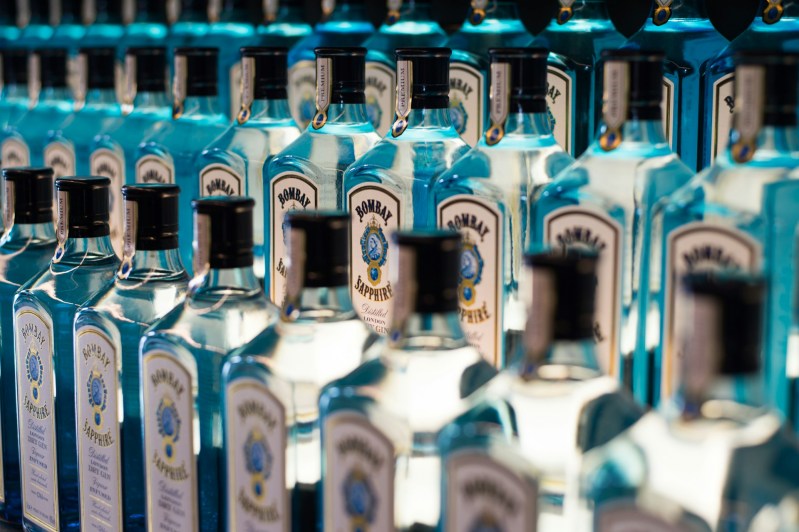If you were to rank summery spirits, there’s a good chance gin would come up on top. This form of alcohol begins as a neutral spirit, just like vodka. But while vodka is distilled multiple times and filtered to remove as much flavor as possible, gin takes the opposite route.
To make gin, the distillery adds ingredients to make it more aromatic and flavorful. To be considered a gin, the spirit must be flavored with juniper berries. Without this pine-flavored ingredient, it’s just vodka. The rest of the ingredients are up to the distiller. This includes classic botanicals, herbs, and fruits like Angelica root, orris root, licorice, orange peels, coriander, and more, as well as unique ingredients like sea kelp, almonds, elderflower, heather, and more.
What is the most popular type of gin?

There’s no variety of gin more popular than London Dry Gin. This dry, less sweet, juniper-forward gin is the base for many of the most well-known classic gin-based cocktails. This includes the Gin & Tonic, Gin Gimlet, Gin Rickey, Tom Collins, and more.
What is dry gin vs gin?

Dry gin simply means that the spirit has less sugar, thereby making it drier. London Dry Gin gets its name because it’s legally not allowed to have any extra sugar added to it. Other gins have no such stipulations. Old Tom Gin often even has sugar added to it to balance out the flavor profile.
What are the main types of gin?

That said, there are a handful of different types of gin. You’re probably well aware of London Dry Gin, but have you heard of Plymouth-style gin or Old Tom? Fear not, we’re here to help you learn about this juniper-based spirit. Keep scrolling to learn about the most common types of gin available today.
London Dry
By far the most popular style of gin, London Dry Gin must be made with juniper as its main ingredient and can’t include any extra sugar. It’s well-known for its piney, juniper-centric flavor profile. The rest is up to the distillers. The taste will be a little different based on the ingredients, including various citrus fruits, herbs, and other spices. The “dry” portion of the gin comes from the fact that it’s less sweet, more herbal, and dryer than other gin varieties.
Plymouth
Plymouth is both a style of gin and a geographical marker. Produced by only one distillery, Plymouth Gin is made in Plymouth, Devon, England, and has been since 1793. It’s known for having less juniper flavor than London Dry Gin and more herbal root flavors. It’s filled with citrus, spices, and gentle juniper and is much less dry (and sweeter) than its London counterpart.
Old Tom
Widely popular in the 1700s, Old Tom Gin has returned to prominence among bartenders and mixologists. It’s known to have a much sweeter, less dry, and less herbal and botanical flavor than London Dry Gin. On top of that, many Old Tom Gins are barrel-aged, and some are even sweetened. A great mixing gin, Old Tom is a perfect choice as the base for an elevated Martini, Tom Collins, and other classic drinks.
New American
This contemporary gin style is fairly self-explanatory. It’s a gin style popularized by craft and artisanal gin makers in the US. While Juniper is present, it’s not the main event. Other botanicals, herbs, citrus fruits, and other ingredients have a greater impact on the overall aroma and flavor. While flavors vary based on the selected ingredients, New American Gins are more balanced and less dry than London Dry Gin.
Navy Strength
Used to describe both rum and gin, Navy Strength is a variety of gin that’s bottled at a high alcohol level. It’s usually bottled at 57% ABV and above and is sometimes referred to as gunpowder gin because if you somehow mixed the spirit with gunpowder, it wouldn’t be diluted and would still be able to ignite. It’s known for its bold, juniper, herbal flavor that’s well-suited for mixing into gin-based cocktails without getting lost in the shuffle of all the other ingredients.
Flavored Gin
Flavored Gin is another variety that couldn’t be more self-explanatory. This type of gin begins as a classic juniper-driven, botanical-filled gin. Then, after the distillation process, other flavors are added to elevate them. This includes citrus, berries, herbs, spices, or other ingredients. They are known to be sweeter than other gin varieties and some even have added sugar. Depending on the flavor, they can accentuate your favorite cocktail by adding new, unique flavors into the experience.




